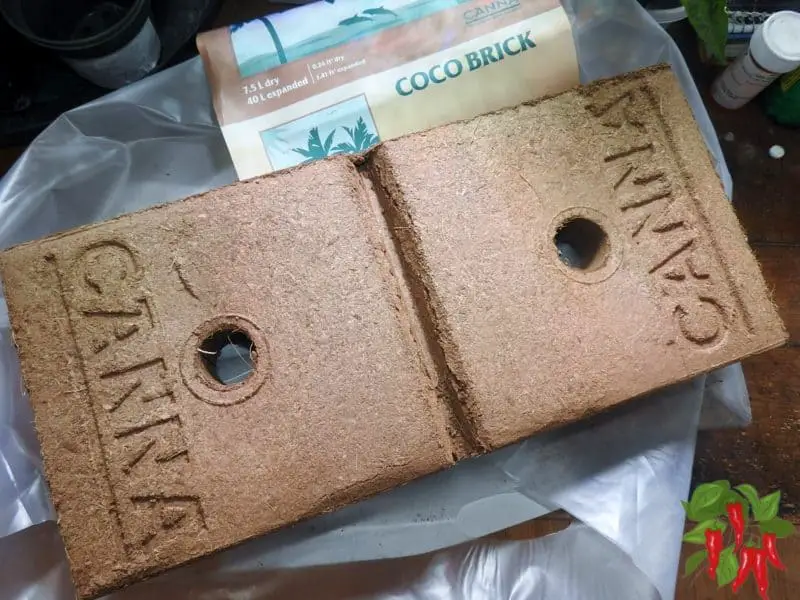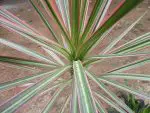This post contains affiliate links. If you buy something from one of our links we may earn a commission. Thanks
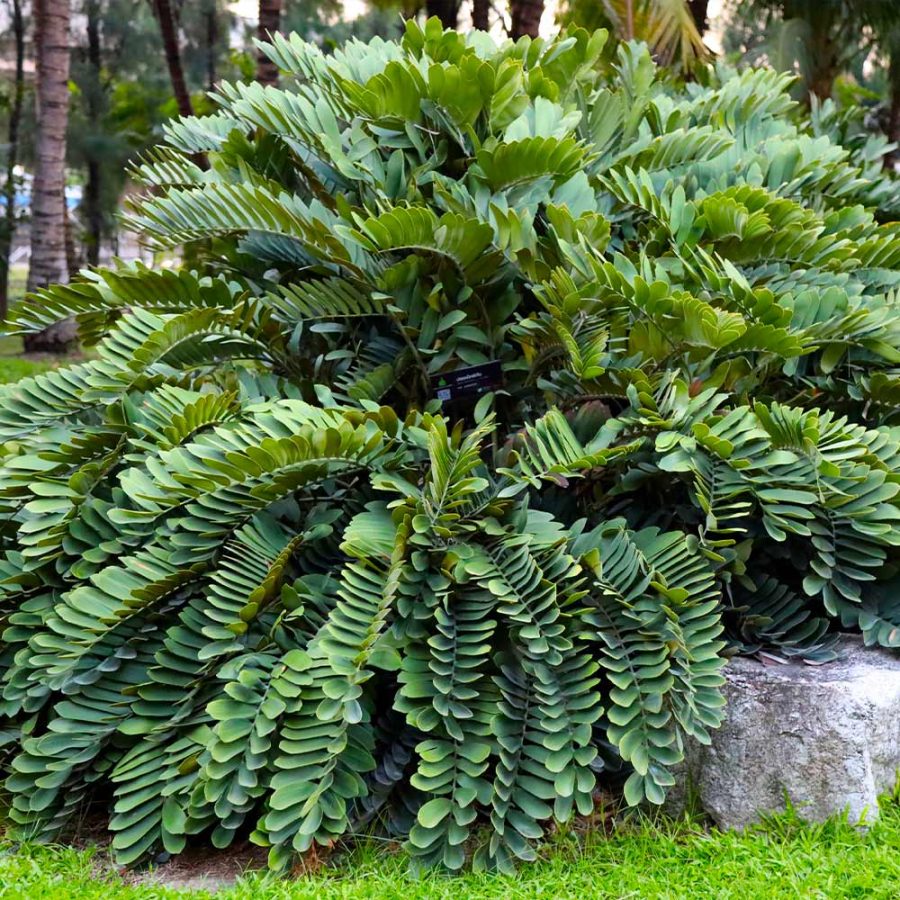
Discover the ultimate guide to Cardboard Palm Care Indoors! Learn how to keep your plant healthy and thriving with expert tips and troubleshooting advice.
Welcome to the world of indoor gardening! If you’re looking to add a touch of tropical beauty to your indoor space, the Cardboard Palm is an excellent choice.
Cardboard Palm (Zamia furfuracea) indoor care necessitates a well-draining soil mix, bright indirect light, and watering when the top inch of soil becomes dry. It’s beneficial to maintain a warm temperature range of 60-80°F and a humidity level of 50-60%. Fertilizing every 2-3 months during the growing season with a balanced, slow-release fertilizer supports its growth.
Known for its unique appearance and easy-to-care-for nature, this plant can thrive in a variety of indoor settings.
However, as with any plant, proper care is crucial to ensure its health and longevity.
In this article, we will explore everything you need to know about Cardboard Palm care indoors, from ideal growing conditions to troubleshooting common issues.
So, let’s dive in and get your green thumb ready!
Get your Cardboard Palm Here on Amazon
Cardboard Palm Quick Facts
| Mature Height: | 2-3 ft Indoors 2-5ft Outdoors |
| Mature Width: | 3-4 ft Indoors 5-8 ft Outdoors |
| Sunlight: | Direct Light |
| Growth Rate: | Slow |
| Botanical Name: | Zamia furfuracea |
| Grows Well In Zones: | 4-11 patio / 9-11 outdoors |
What Is A Cardboard Palm? It’s Actually A Cycad!
Hey plant lovers! Are you ready to learn about one of the coolest houseplants out there?
Meet the Cardboard Palm, aka Zamia furfuracea.
It’s not a true palm, but a cycad that looks like it’s been plucked straight from the Jurassic era!
The Zamia palm has pinnate leaves like a palm tree.
Sago palms are another cycad that looks like palm trees.
This slow-growing plant has thick, leathery fronds that look like they’re made of cardboard, hence the name.
It’s an awesome choice for indoor gardening, especially if you’re looking for something that’s low-maintenance, hardy, and visually stunning.
So let’s dive in and learn everything there is to know about the Cardboard Palm!
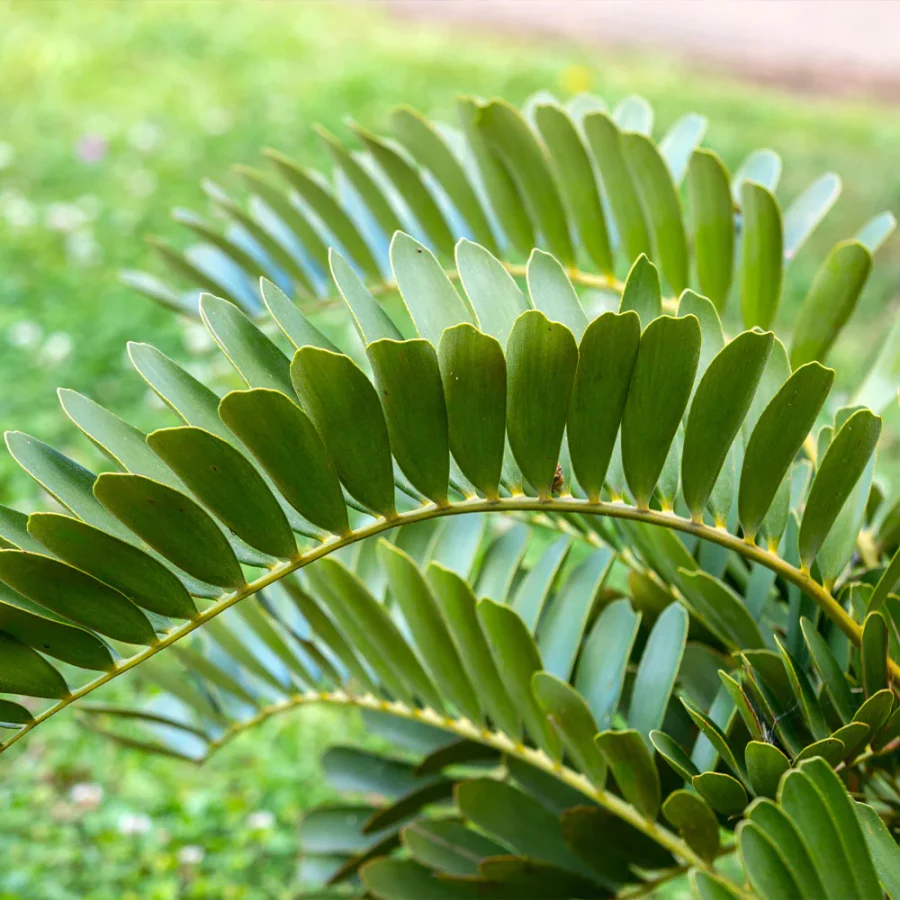
Overview of Cardboard Palm
Hello, plant lovers! Are you ready to learn all about the Cardboard Palm? This unique and fascinating plant may not be a true palm, but it sure looks like one!
With its leathery fronds and rugged appearance, the Cardboard Palm, also known as Zamia furfuracea, is a standout choice for any indoor garden.
In this section, we’ll take a closer look at the Cardboard Palm’s origins, its physical characteristics, and why it’s such a popular choice among plant enthusiasts as a potted plant.
So let’s dive in and discover everything there is to know about this prehistoric-looking plant!
Native habitat and growing conditions:
The Cardboard Palm is native to the warm, humid forests of eastern Mexico. In its natural habitat, it grows in well-drained soil and receives a moderate amount of water.
This hardy plant rarely experiences times of drought there. The plant thrives in a warm temperature range between 65 and 85 degrees Fahrenheit and requires high humidity to grow properly.
When growing the Cardboard Palm indoors, it is important to replicate these conditions as closely as possible and avoid cold temperatures to ensure the plant’s health.
Identification of the cardboard palm:
The Cardboard Palm is characterized by its thick, leathery fronds that are reminiscent of cardboard.
The fronds grow from a central stem that forms a low-growing rosette.
The fronds can be up to 3 feet long and are arranged in a circular pattern around the stem.
This attractive plant has a slow growth habit and won’t quickly outgrow its space.
These ancient plants going back to the time of the dinosaurs produce cones, which can be either male or female.
The cones are produced on separate plants, so it is important to have both male and female plants if you want your Cardboard Palm to produce seeds.
How can you tell the difference?
You probably won’t be able to tell the difference between male and female plants when you first buy one. It can take years for them to show their sex.
The only way to tell whether your Cardboard Palm is male or female is to wait for the plant to produce cones.
This requires you to have mature plants and this can take several years, so it requires some patience.
Once the cones have appeared, you can compare their size and shape to determine whether they have a male or female cone.
To tell the difference between a male and female Cardboard Palm, you will need to look at the cones.
The female cones are larger and rounder than the male cones, which are smaller and more elongated.
The female cones also produce bright red seeds, while the male cones do not.
If you want to ensure that your Cardboard Palm produces seeds, it is best to have both male and female plants.
This will ensure that the female plant has access to the pollen it needs to produce seeds.
If you only have one plant, it is unlikely that it will produce seeds, as it will not have access to the necessary pollen.
But you may be able to buy seeds online if you look.
Cardboard Palm Care Indoors
Alright, folks, it’s time to get into the nitty-gritty of Cardboard Palm Care Indoors!
Now that you know a little bit about this unique and beautiful plant, it’s time to talk about how to take care of it properly.
In this section, we’ll cover everything from the ideal temperature and humidity to the best soil to use.
Whether you’re a seasoned plant grower or a total newbie, we’ve got you covered.
So grab your watering can and let’s get started on taking the best possible care of your Cardboard Palm!
Now that you’ve brought your cardboard palm indoors, let’s make sure it thrives in its new environment! Here are some tips for caring for your cardboard palm:
Best Placement for Cardboard Palms Indoors
Place your cardboard palm in a spot that receives bright, indirect light. Too much direct sunlight can scorch the plant’s leaves.
Avoid placing your cardboard palm near cold drafts, such as near doors or windows during the winter months.

Lighting Requirements
Proving the right lighting is crucial for keeping your Cardboard palm healthy and happy. Here are some tips to help you do just that.
Bright, indirect light: Cardboard palms thrive in bright, indirect light. Placing them near a window that receives bright but filtered light is ideal.
East-facing or south-facing windows are usually the best, as they receive bright light without the harshness of the full afternoon sun.
If you move your plant outdoors during the summer months full sun can cause problems for your cycad.
Direct sunlight:
Indoors a mature plant can handle 4-6 hours of direct sunlight.
If your plant is being exposed to much direct sunlight, move it to a shadier spot or filter the light with a sheer curtain.
Signs of inadequate lighting:
If your cardboard palm is not receiving enough light, it may show signs of stress, such as slow growth, yellowing leaves, or drooping.
If you notice any of these signs, try moving your plant to a brighter location or supplementing its natural light with artificial light.
Supplementing natural light with artificial light:
If you don’t have a bright window or if you want to extend the amount of light your cardboard palm receives, you can supplement its natural light with artificial light.
Types of grow lights for indoor plants:
There are several types of grow lights available for indoor plants, including fluorescent, and LED lights.
LED grow lights are usually the most energy-efficient and effective for indoor plants, as they produce a full spectrum of light that mimics natural sunlight.
How to use grow lights for cardboard palms:
To use grow lights for your cardboard palm, position LED lights above the plant, about 12-24 inches away.
Leave the lights on for 12-16 hours per day, and make sure to use a timer to turn them off at night to give your plant a rest period.
Common mistakes to avoid with lighting:
Overexposure to direct sunlight can scorch your plant’s leaves, while insufficient light can cause slow growth and other health problems.
Make sure to monitor your plant’s light levels and adjust as needed to avoid these issues.
Also, be careful not to leave your grow lights on for too long, as this can cause your plant to become stressed and eventually die.
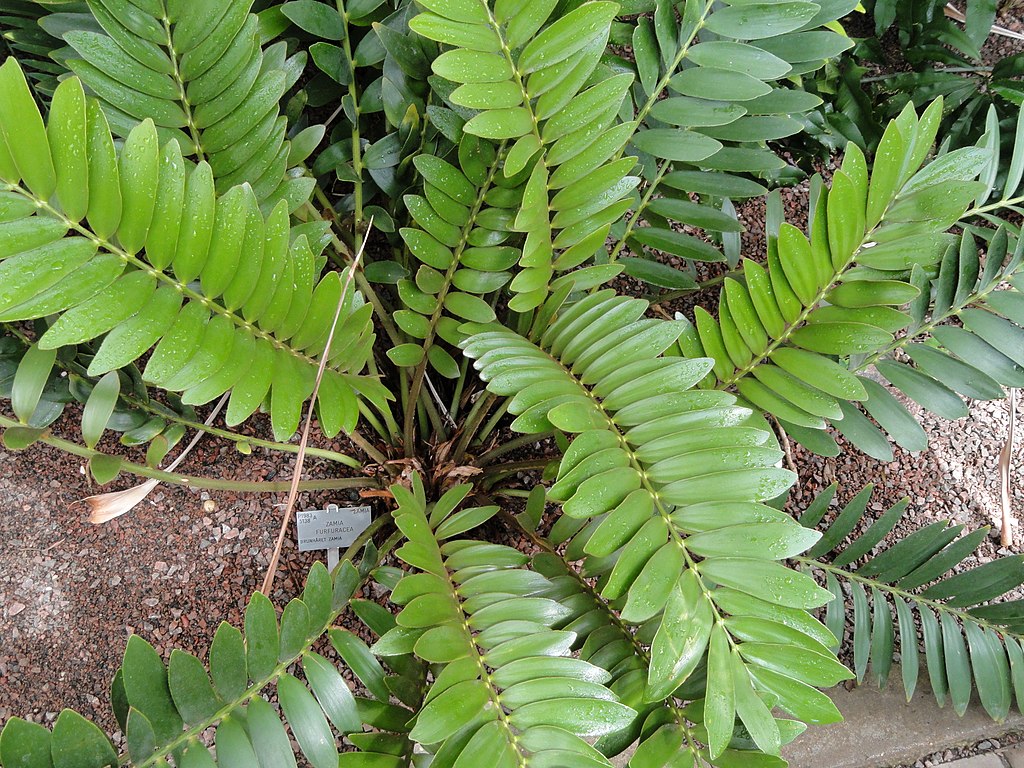
Soil
When it comes to indoor gardening, using the right soil type is crucial to the health and success of your plants.
This is especially true for cardboard palms, which have specific needs when it comes to soil.
In this section, we’ll go over the importance of using a good potting mix for cardboard palms, and why a coco coir and perlite mix is an excellent choice.
We’ll also cover how to create your own coco coir and perlite mix, so you can be sure your cardboard palm is getting the best soil possible.
Importance of using a good potting mix for cardboard palms:
Choosing the right potting mix is essential for the health and growth of your cardboard palm.
A good potting mix should provide the necessary nutrients and good drainage that your plant needs to thrive.
The wrong soil mix can lead to issues like root rot or nutrient deficiencies, which can cause your plant to suffer or even die.
Advantages of using a coco coir and perlite mix:
Coco coir and perlite make an excellent potting mix for cardboard palms.
Coco coir is a natural and sustainable growing medium that helps improve drainage and aeration, while also retaining moisture.
Perlite is a lightweight, porous material that helps with water retention and provides excellent drainage.
This mix is perfect for cardboard palms, which prefer well-draining soil and do not like to sit in wet soil for extended periods.
Canna coco bricks are easy to rehydrate or store and are top quality.
How to create a coco coir and perlite mix:
To make your own coco coir and perlite mix, you’ll need to mix them in a ratio of 2:1 (2 parts coco coir to 1 part perlite).
Start by adding the coco coir to a large container or wheelbarrow, and then add the perlite.
Mix the two together until they are well combined. You can also add some organic fertilizer to the mix to provide additional nutrients for your cardboard palm.
This mix is perfect for repotting your cardboard palm or for starting a new plant. Be sure to moisten the mix before using it to ensure it’s evenly damp throughout.
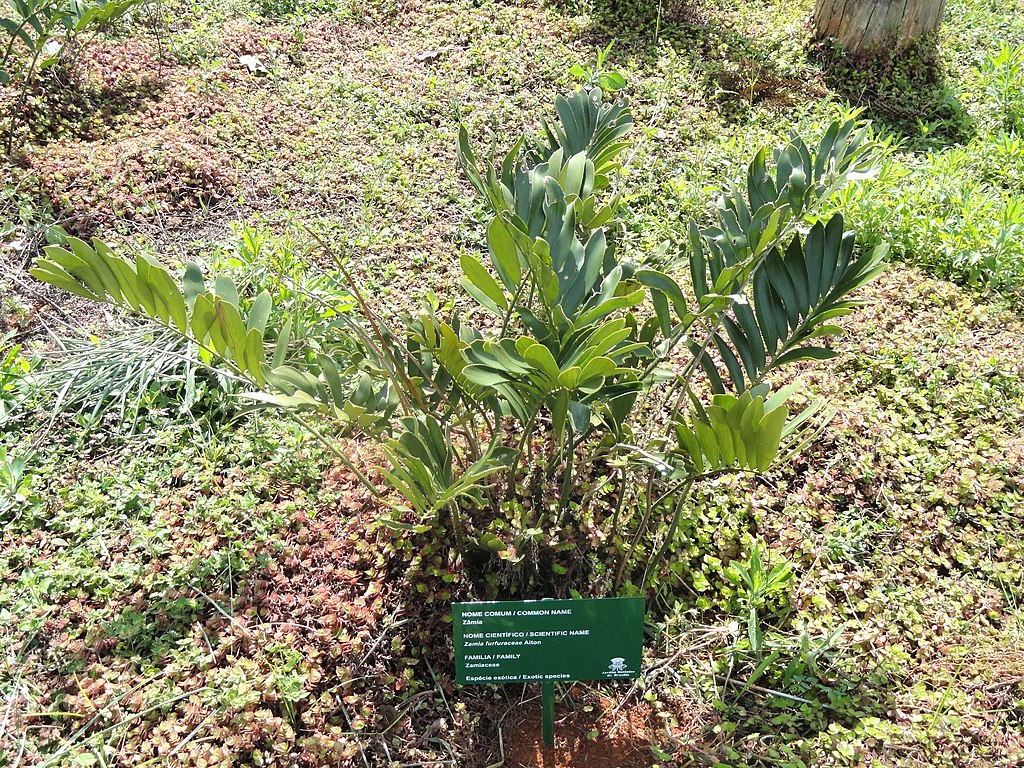
Proper Watering:
Proper watering is crucial to the health of your cardboard palm.
Over-watering or under-watering can lead to serious problems, such as root rot or wilting.
In this section, we’ll cover some key tips and tricks to help you get the watering just right for your plant.
We’ll discuss the ideal frequency, the right kind of water to use, and some signs to look out for that indicate your plant may need more or less water.
Importance of Proper Watering for Cardboard Palms
Proper watering is crucial for the health of your cardboard palm. The trick is giving your Zamia plant enough moisture without giving it too much.
Overwatering or underwatering can cause serious problems, including root rot and yellowing of leaves.
It is important to maintain a consistent watering schedule and provide your plant with the right amount of water.
Signs of Overwatering or Underwatering
It can be difficult to know exactly how much water your plant needs. Some signs of overwatering include yellowing leaves, soggy soil, and a foul smell.
Signs of underwatering include dry, crispy leaves and soil that pulls away from the edges of the pot.
Why Tap Water Can Be Bad for Cardboard Palms
Tap water can contain harmful chemicals and minerals, such as chlorine and fluoride, that can damage your cardboard palm tree over time.
These chemicals can accumulate in the soil and cause nutrient imbalances, which can lead to stunted growth and other issues.
Alternatives to Tap Water
There are a few alternatives to tap water that are better for your cardboard palm.
Rainwater is a great option, as it is free of harmful chemicals and minerals. If rainwater is not available, you can also use distilled water or RO water.
Another option is using a filter that goes on tour tap to remove chlorine, chloramines, and fluorides.
How to Water Your Cardboard Palm
To water your cardboard palm, pour water into the soil until it begins to drain out of the bottom of the pot.
Make sure not to let the plant sit in standing water, as this can cause root rot.
The frequency of watering will depend on various factors such as the size of the pot, the environment, and the season.
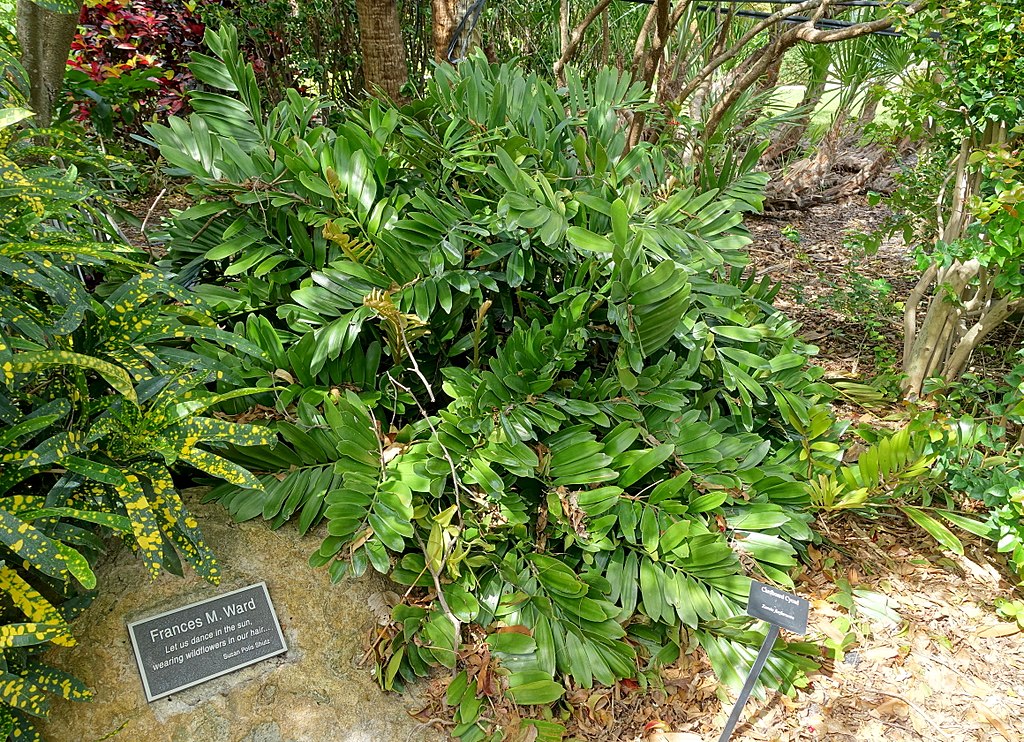
Fertilizing:
Now that you’ve got your cardboard palm planted in the perfect potting mix and the right size container, it’s time to talk about fertilizing.
Proper fertilization is important to ensure your plant gets the nutrients it needs to thrive.
In this section, we’ll cover the basics of fertilizing your cardboard palm, including the best types of fertilizer to use and how often to fertilize.
Importance of fertilizing your cardboard palm
Fertilizing is an essential aspect of caring for your cardboard palm.
Like other plants, cardboard palms require nutrients to thrive, and these nutrients can deplete over time.
Fertilizing can help replenish these nutrients and promote healthy growth in your plant.
Best types of fertilizer for cardboard palms
When choosing a fertilizer for your cardboard palm, it’s essential to choose a slow-release fertilizer that provides a balanced blend of nitrogen, phosphorus, and potassium.
You can also look for fertilizers that contain micronutrients such as iron and magnesium, which are essential for healthy growth.
How often to fertilize your plant
Cardboard palms do not require frequent fertilizing, and overfertilizing can actually harm your plant.
Generally, it’s recommended to fertilize once every three to four months during the growing season (spring and summer) and once every six months during the dormant season (fall and winter).
Tips for fertilizing without overdoing it
When fertilizing your cardboard palm, it’s important to follow the instructions on the label and avoid overfertilizing.
Overfertilizing can cause nutrient burn, which can damage your plant. You can also consider using a diluted fertilizer to ensure that you’re not giving your plant too much at once.
Additionally, it’s important to water your plant thoroughly after fertilizing to prevent salt buildup in the soil.
The use of tree spikes will take the guesswork out of fertilizing. Here is what I recommend for  fertilizing your Cardboard Palm.
fertilizing your Cardboard Palm.
I recommend using Jobes Organics fertilizer spikes.
They are easy to use and last for 2-3 months.
They are designed for container-grown citrus.
Using 2 spikes for a 12-inch pot or 3 for an 18-inch pot takes the guesswork out of fertilizing.
They provide a 3-5-5 fertilizer blend along with micronutrients and beneficial bacteria.
Pot Size
Choosing the right pot size is essential for the healthy growth of your cardboard palm.
A pot that is too small can restrict root growth, while one that is too large can hold onto too much moisture, causing root rot.
In this section, we’ll go over the basics of choosing the right pot size for your cardboard palm and why it’s important. Let’s dive in!
Choosing the right pot size for your cardboard palm
Choosing the right pot size is important to keep your cardboard palm happy and healthy.
A pot that is too small can restrict the growth of the plant’s roots and cause the palm to become root-bound, leading to stunted growth and wilting.
On the other hand, a pot that is too large can hold too much moisture, leading to root rot and other issues. It’s essential to find the perfect balance for your plant’s pot size.
Signs that your plant has outgrown its pot
Although they are slow-growing plants they will eventually outgrow their pots.
If your cardboard palm has outgrown its pot, you may notice a few signs.
The most obvious sign is when the roots start to come out of the drainage holes at the bottom of the pot.
Another sign is when the soil dries out quickly, even after watering. You may also notice slow growth or yellowing of leaves, which can indicate a lack of space for the roots.
Repotting:
If you’ve noticed that your cardboard palm is outgrowing its current pot or the soil seems too compacted, it might be time to repot your plant.
Repotting your cardboard palm can help provide it with more space to grow and thrive, as well as fresh soil with the nutrients it needs.
In this section, we’ll cover the importance of choosing the right pot size, signs that your plant has outgrown its pot, and how to properly repot your cardboard palm to keep it healthy and happy.
How often to repot your cardboard palm:
Cardboard palms generally need to be repotted every two to three years, or when they outgrow their current pot.
If you notice that your plant’s roots are growing out of the drainage holes or the soil is compacted and not draining well, it may be time to repot.
Early spring is a good time to repot before the growing cycle starts up again.
Signs that your plant needs to be repotted:
There are several signs that your cardboard cycad may need to be repotted.
These include roots growing out of the drainage holes, slow growth or stunted growth, soil that dries out quickly, or leaves that are yellowing or wilting.
Step-by-step instructions for repotting:
• Choose a pot that is one size larger than the current pot, with drainage holes.
• Fill the bottom of the new pot with fresh potting soil, making a small mound in the center.
• Gently remove the plant from its current pot, taking care not to damage the roots.
• Loosen any compacted soil from the roots and trim any dead or damaged roots.
• Place the plant in the new pot, making sure it sits at the same level as before.
Add fresh potting soil around the roots, gently firming it in place with your fingers.
• Water the plant thoroughly and place it in a bright location, out of direct sunlight.
By following these simple steps, you can successfully repot your cardboard palm and help it thrive in its new home.
B. Temperature and Humidity Requirements
Cardboard palms prefer warm, humid environments. The ideal preferred temperature range is from 60-80°F (15-27°C).
Maintain humidity levels of 50-60% by placing a humidifier nearby or misting the leaves regularly.
Watering and Fertilization Tips
Water your cardboard palm when the top inch of soil feels dry. Be careful not to overwater, as the plant is susceptible to root rot.
Fertilize your cardboard palm with a balanced, slow-release fertilizer every 2-3 months during the growing season.
Pruning and Propagation Tips
Prune away yellow or brown leaves with sharp, clean scissors or pruning shears.
To propagate your cardboard palm, remove offsets from the base of the plant and plant them in a well-draining potting mix.
Common Pests and Diseases and How to Prevent or Treat Them
Mealybugs and spider mites are common pests that can infest cardboard palms. Use a neem oil spray or insecticidal soap to eliminate these pests.
Fusarium wilt, a fungal disease, can cause yellowing, wilting, and eventual death of the plant.
Ensure your plant has proper drainage and avoid overwatering to prevent this disease.
With these indoor care tips, your cardboard palm will thrive in its new environment!
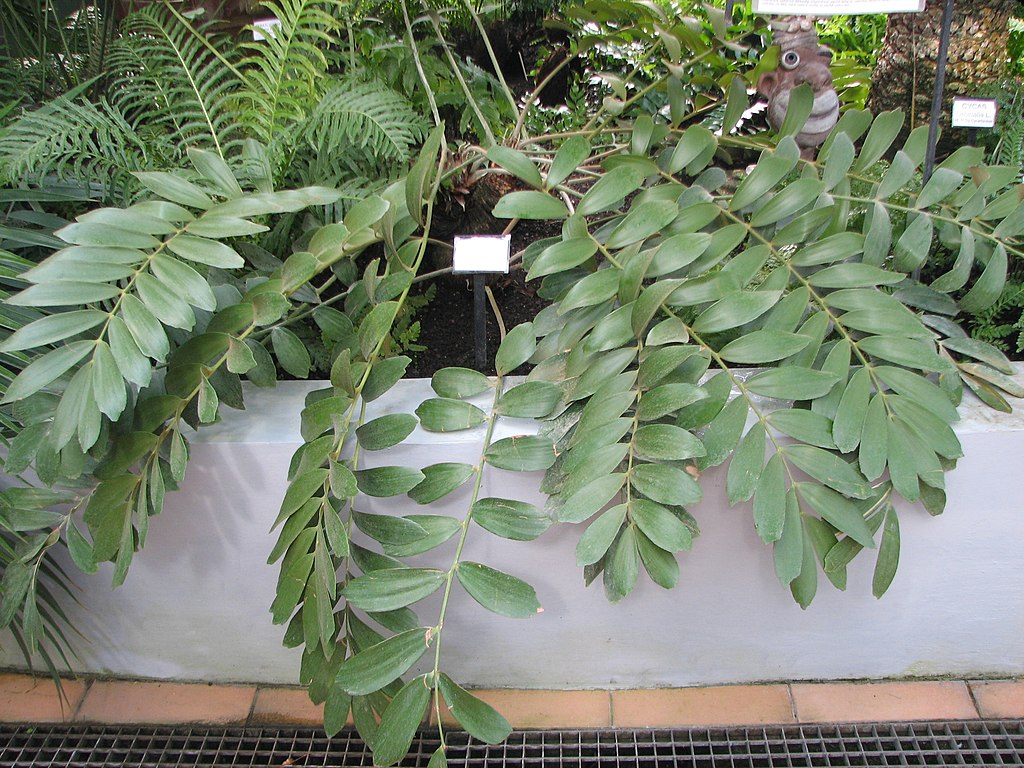
Tips for Troubleshooting Cardboard Palm Issues
Uh oh, it looks like your Cardboard Palm might be having some issues. Don’t worry though, we’ve got your back!
In this section, we’ll go over some of the most common problems that you might encounter when caring for your Cardboard Palm, and we’ll give you some tips on how to fix them.
From yellowing fronds to pests and diseases, we’ve got all the information you need to keep your Cardboard Palm healthy and happy.
So let’s roll up our sleeves and get ready to troubleshoot any issues that come our way!
Yellowing or browning of leaves:
If you notice that the fronds of your Cardboard Palm are turning yellow or brown, this could be a sign of several issues.
One of the most common causes is overwatering.
Cardboard Palms prefer well-draining soil, and too much water can lead to root rot, which can cause the fronds to yellow and wilt.
To fix this issue, make sure that you are not overwatering your plant, and consider repotting it in well-draining soil.
Drooping or wilting of the plant:
If your Cardboard Palm is drooping or wilting, this could be a sign of underwatering.
Cardboard Palms prefer soil that is evenly moist, but not waterlogged. If the soil is too dry, the plant will start to wilt and droop.
To fix this issue, water your plant more frequently, and consider misting the fronds to increase humidity levels.
Stunted growth or lack of growth:
If your Cardboard Palm is not growing or growing very slowly, this could be a sign of a lack of nutrients.
The Cardboard Palm plant requires regular fertilization to thrive, and if they are not receiving enough nutrients, it may not grow properly.
To fix this issue, consider fertilizing your plant with a balanced fertilizer every few months.
Other issues and their causes:
Other issues that you may encounter when caring for your Cardboard plant include pest infestations, such as spider mites or mealybugs, as well as fungal or bacterial diseases.
These issues can be caused by poor growing conditions, such as low humidity or poor air circulation.
To prevent these issues, make sure that you are providing your plant with the right growing conditions, and consider treating any pests or diseases with an appropriate insecticide or fungicide.
Common Insect Pests for Indoor Plants and How to Treat Them
Insect pests can be a common problem for indoor plants, but with the right treatment, you can keep your plants healthy and thriving.
Be sure to keep an eye out for signs of insect infestations and take action as soon as possible to prevent further damage
Indoor plants are vulnerable to a variety of insect pests that can damage their leaves and weaken their growth.
In this post, we’ll cover some of the most common insect pests that can affect indoor plants, including the signs to look out for and how to treat them.
Spider Mites
Spider mites are tiny arachnids that feed on the sap of plants, causing stippling and yellowing of leaves.
They often produce webbing on the leaves and stems of plants. To treat spider mites, you can use a commercial miticide or use insecticidal soap, or neem oil.
Be sure to wash the leaves of your plant thoroughly to remove any webbing.
Mealybugs
Mealybugs are small, white insects that cluster on the undersides of leaves and along the stems of plants.
They feed on the sap of plants, causing yellowing and wilting of leaves.
To treat mealybugs, you can use a cotton swab dipped in rubbing alcohol to remove them from the plant, or use a commercial insecticidal soap.
Scale Insects
Scale insects are small, oval-shaped insects that attach themselves to the leaves and stems of plants.
They feed on the sap of plants, causing yellowing and wilting of leaves.
To treat scale insects, you can use a cotton swab dipped in rubbing alcohol to remove them from the plant, or use a commercial insecticidal soap or neem oil.
Aphids
Aphids are small, pear-shaped insects that feed on the sap of plants, causing curling and yellowing of leaves.
They are often found on the undersides of leaves and along the stems of plants. To treat aphids, you can use a commercial insecticidal soap using neem oil.
Fungus Gnats
Fungus gnats are small, dark flies that hover around the soil of plants. Their larvae feed on the roots of plants, causing stunted growth and yellowing of leaves.
To treat fungus gnats, you can let the soil dry out between waterings and use yellow sticky traps to catch the adult flies.
Final Thoughts On Cardboard Palm Care Indoors
Congratulations on making it this far in your journey to caring for your cardboard palm!
We’ve covered a lot of ground together, from the basics of identifying and growing cardboard palms to troubleshooting issues and best practices for repotting and fertilizing.
In this final section, we’ll briefly recap some of the most important points and provide some resources for further reading. So, let’s dive in and wrap things up!
Throughout this guide, we have covered a range of important topics related to caring for cardboard palms.
In terms of soil, we have discussed the importance of using a good potting mix that includes coco coir and perlite, which offers a range of advantages for promoting healthy growth.
We have also explored the importance of choosing the right pot size, and how to tell when your plant needs to be repotted.
Additionally, we have covered fertilizing, including the best types of fertilizer for cardboard palms and how to avoid common mistakes.
By following these guidelines, you can help ensure that your cardboard palm thrives in its indoor environment.
Growing cardboard palms indoors
In conclusion, cardboard palms are a great option for those looking to bring some greenery into their indoor spaces.
With their unique appearance and easy-care requirements, they are a great choice for beginners and experienced indoor gardeners alike.
By following the guidelines outlined in this guide, you can help ensure that your cardboard palm grows and thrives, bringing beauty and fresh air into your home.
Don’t be afraid to experiment and try new things as you care for your plant – with a little patience and attention, you can create a thriving indoor garden that brings joy and satisfaction for years to come.
Remember, the cardboard palm may look like a palm tree, but it’s actually a cycad that requires specialized care.
By following the tips in this guide, you can provide the right growing conditions for your cardboard palm to thrive.
In this final section, we’ll provide a quick recap of the key takeaways from this guide, as well as some additional resources to help you on your plant care journey.
Cardboard Palm FAQ
The Cardboard Palm is a unique plant that brings a tropical feel to any indoor setting.
While it’s not an actual palm but a cycad, its care is straightforward. However, there are common queries that come up regarding its care, propagation, and troubleshooting.
Below are some frequently asked questions to assist you in ensuring the health and vibrancy of your Cardboard Palm.
Q. How often should I water my Cardboard Palm indoors?
A. Water your Cardboard Palm when the top inch of soil feels dry to the touch. Over-watering can lead to root rot, so it’s essential to let the soil dry out slightly between waterings.
Q. What type of soil is best for a Cardboard Palm?
A. A well-draining soil mix is ideal for Cardboard Palms. A blend of coco coir and perlite in a 2:1 ratio can provide the drainage and aeration the plant needs to thrive.
Q. How do I deal with common pests on my Cardboard Palm?
A. Common pests like mealybugs and spider mites can be treated with insecticidal soap or neem oil. Ensure to maintain good air circulation and clean the leaves regularly to prevent pest infestations.
Q. How can I propagate my Cardboard Palm?
A. Propagate Cardboard Palms by removing offsets from the base of the plant. Plant the offsets in a well-draining potting mix, and place them in a warm, bright area until they establish roots and start to grow.
Final Thoughts On Growing Cardboard Palms Indoors
Growing cardboard palms indoors can be a rewarding and enjoyable experience for plant enthusiasts of all levels.
Not only do they provide a striking visual accent to any indoor space, but they also have a long lifespan and can thrive for many years if given the proper care.
So if you’re looking for a new challenge or want to add some greenery to your living space, why not give the cardboard palm a try?
By following this blog post on how to care for cardboard palms indoors, you have useful information and tips to keep their plants healthy and thriving.
Get your Cardboard Palm Here on Amazon
Read more: Indoor Palm Tree Care: 11 Powerful Tips Complete Guide For Beginners




